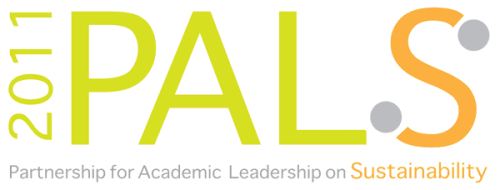By Debera Johnson, Academic Director of Sustainability, Pratt Institute
(This article appears in the June, 2011 issue of The ACUPCC Implementer)
In 2008 Pratt received a four-year, federal grant to “green” their academic programs and make the link between academics and operations. This institutionalized my role as the Academic Director of Sustainability (ADoS) at Pratt and helped fund program development throughout the institute. The role of the ADoS was established by Dr. Thomas Schutte, President of Pratt Institute and one of the first 50 signatories of the ACUPCC. Dr. Schutte recognized the importance of a holistic approach that linked facilities with academics. This seemed especially relevant at a school of art, design and architecture where students have opportunities to practice the sustainable best practices of their profession and have a direct impact on changing the campus environment. The outcome has been to naturalize sustainability as a critical layer of thinking within each of our programs and throughout operations.

Over a series of campus visits nation-wide to share our work and learn from our peers, I realized that independent art and design schools have a unique set of issues and limited resources– it became clear that it was going to take forever for each of us to make change one by one. It occurred to me that if we could find a way to work together, we had the opportunity to shift from incremental to transformative change.
Dr. Schutte reached out to the presidents of the AICAD schools (Association of Independent Colleges of Art and Design) and we coordinated the Pratt Academic Leadership Summit on Sustainability (PALSS), a four-day summit in NYC. We shifted our competitive model to one of collaboration and came together to create a strategic plan for engaging leadership and integrating environmental sustainability education into art and design programs.
There were five main themes to emerge from the four-day summit — the need to demonstrate and communicate the critical role of art and design education in re-envisioning a sustainable future; the need to anticipate opportunities rather than react to challenges; the need for better communication about accomplishments in social and environmental education; the need to refocus “sustainability” to include both environmental and social justice; and the need to build a sustainability ‘marketplace’ to connect and share resources across institutions. Each PALS fellow left with a presentation to customize for leadership at their home institution and a promise to attend the monthly meeting held online.
Over the past year the group of 33 schools has worked to promote and support action at the institutional level. The group changed its name to PALS – Partnership for Academic Leadership in Sustainability – and will be coming together in September to finalize a jointly curated exhibit of the “best of sustainable art and design.” Conceived as an organic exhibition that will continue to grow, the exhibit will provide a platform for the schools to hold electronic town meetings between our students and faculty. PALS will also be developing metrics for sustainability that build on existing tools like STARS by adding a layer that targets the environmental and social issues of art and design programs.
Each of the PALS fellows has become a portal to resources and a voice for the particular needs of their school – we have a “ning” site for conversations and planning and a “basecamp” site for posting resources. We look forward to our first “Dialogue on Demand” where we will convene a conversation between the deans of fine arts programs from our respective schools. The next will be a faculty development workshop on LCA software. PALS is an infrastructure for collaboration that can be tapped in numerous and amazing ways.
The vision of PALS is to build and infrastructure for collaboration between the schools. Given the rising cost of education, especially in private schools, we have discovered a very efficient way to operate which has engaged leadership and created momentum. Most importantly it has the potential to broaden the access to critical knowledge and resources for our faculty, the people who are challenged to make real change quickly and influence the next generation of artists, designers, and thought leaders will be making decisions that will directly impact our world.

Add new comment